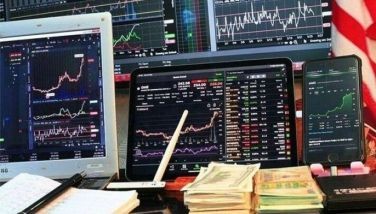Can DOTC catch up?

Frankly, I doubt it. But the real question should be, Does DOTC want to catch up? It is now clearer than ever that the folks constituting the DOTC leadership are just happy to dribble the ball, so to speak, with no intention of ever shooting for the basket.
But that is tragic because failure of DOTC to get all those train systems, airports, seaports and the computer system and car plates for LTO kills our productivity and competitiveness. I am told that even in the Cabinet, they are increasingly worried DOTC will not be able to deliver on airport improvements in time for the World Economic Forum we are hosting next year and the APEC Summit Meeting in 2015.
The recent competitiveness report of the WEF once again highlighted the sorry state of our infrastructure and this was pointed to as a principal reason why we are seen to be less competitive in the region. DTI Secretary Greg Domingo was reported to be losing his patience too even if he is trying his best to be a team player. He had to express his observations with a lot of hope that DOTC will get some projects going.
Sec Domingo: “If we could operate some PPP projects in the next six to 12 months, we will abruptly improve our competitiveness ranking.†That is of course, a big IF. Domingo admitted that the infrastructure issue was ranked as the most problematic among the 12 pillars in the WEF competitiveness report.
Domingo expressed hope that starting this year, with the signing of the contract with Japanese contractor Takenaka to finish the NAIA Terminal 3, we will start to move. He said that NAIA 3, will be fully operational in 10 months. I wouldn’t hold my breath if I were Sec Domingo. The WEF report noted the airport as one of the most problematic infrastructures in the country.
The WEF competitiveness report noted that Philippine improvements are coming from such a low base that the country cannot afford to be complacent. “For instance, transport infrastructure has improved, but remains in a dire state (84th) especially with respect to airport (113th) and seaport facilities (116th),†the report said.
We are indeed, falling further and further behind in the region and it is not because we don’t have the money to build much needed infrastructure. Simply, our bureaucracy and the folks P-Noy appointed to head DOTC in particular, just don’t have the inclination, and maybe the ability to get anything done.
One observer e-mailed me to point out recent announcements for Metro rail projects in the region show we will be even further behind. Feverish activities on these projects indicate a strong desire to deliver. For instance, in Singapore, they are working on the Thomson Line comprising of 30km, 22 stations – all fully underground and to be completed by 2021. This will be followed by the Eastern Region Line tender and the project is targeted for completion by 2020.
MRTA Thailand is planning to build 230km of new metros over the next eight years and to commence construction of all lines by 2015 and commence services of all lines by 2019. The Singapore-Kuala Lumpur high speed railway link is targeted to be completed in 2020.
Doesn’t that make you feel sick we can not even get Line 1 Cavite or the four kilometer Line 2 East Extension moving after so long a time?
Our problem, as I see it, is our propensity to be happy with small victories and to run the government by press releases. Significant as the high GDP growth rate is and our ascension to investment grade status by the credit ratings agencies, neither of these impact on the massive work that need to be done to eradicate poverty.
I like a recent article of Dr. Bernie Villegas who related the very balanced view of our current economy made by fellow economist Emil Antonio. Both Bernie and Emil were among my professors when I took the Senior Business Economics course at the Center for Research and Development some 40 years ago.
According to Bernie, Emil made a presentation to business leaders entitled “The Philippine Economy: Blessings to Count; Challenges to Surmount.†In this presentation, Emil recognized the undeniable facts: higher growth of production volume; more predictable prices; upgrade in credit ratings; and more optimistic view of locals and foreigners.
The relative peace on the labor front in the Philippines, it was pointed out, gives us a distinct advantage vis-a-vis the other labor surplus ASEAN economies in attracting Japanese and Korean manufacturing firms already disenchanted with the high labor costs and social unrest in China. It is such that our EPZA accredited industrial parks, like the First Philippine Industrial Park in Batangas are running out of land to sell or lease to investors in manufacturing.
But as Bernie pointed out, Emil is quick to warn we must not exaggerate these victories. Emil thinks we may be blinded to two realities: 1) these achievements are not as outstanding as they may appear if put in the proper historical context; and 2) the possibility of policy mistakes that need to be rectified.
As regards the first, it was pointed out the “good†growth was on the back of a bad preceding year. The growth in 2010-2011 was only 3.6 percent while that in 2011-2012 was 6.8 percent. The more recent growth just placed the economy back to the old trend path of an average annual growth of 4.8 percent, nothing to boast about.
“When one analyzes the growth of 7.8 percent in the first quarter of 2013, the following sectoral growth rates are revealed: Agriculture (3.3 percent); industry (10.9 per cent) and services (7.0 percent). Under industry, there was a precipitous fall of -16.9 percent in mining; a 9.7 percent growth in manufacturing; a 33.7 percent growth in construction; and a lackluster growth of 0.1 percent in electricity, gas, and water.
“In construction, 28 percent growth was from the public sector; while 72 percent from the private sector. The high rate of private construction can be broken down into residential (61 percent) and non-residential (36 percent). Dr. Antonio feels that the above-average growth of construction will be very difficult to sustain in the medium-term.â€
Bernie also pointed out the relatively slower growth in income compared to the growth of production. “This explains why the growth is not trickling down to the lower income groups either because of non-inclusive growth or simply because growth is insufficient to lift more people out of poverty. My own take is that growth rates of 9 percent or more will be necessary for a couple of years before we can really attain inclusive growth. At the moment, we can still consider the growth of the Philippine economy mediocre.â€
Dr. Antonio feels that we have the potential for faster growth but we have failed to exploit these potentials because we chose to focus on strategies with limited effects on growth. “The first failure has to do with our inability to match the large increase in savings over the last five to seven years with corresponding increases in investments. We saved a lot, but invested too little.
“The second failure had to do with our inability to use more productively the abundant foreign exchange reserves we have accumulated. Our banks parked our foreign exchange earnings in special deposit accounts (SDAs). The BSP mopped up excess liquidity by purchasing dollars to build up our international reserves.â€
Dr. Antonio’s views, Bernie explained, is that all these policy moves led to an anemic growth in total investment expenditures, particularly private investments that grew at only 3.5 percent annually on the average over the last 12 years. Despite their optimism, investors are not significantly increasing their investments.
As foreign currencies became cheaper, real incomes of OFWs suffered, thus depressing consumption which is an important engine of growth in the Philippines. Growth of exports also suffered.
All these add up to slow growth of investments and poor growth of dollar income earners, which in turn, explain the mediocre growth of volume and income from production activities.
But I guess P-Noy’s economic managers are more focused on a press release and a favorable headline. They should be working on policy reforms, of which there are plenty to make, to get us going into a strong growth path beyond 2016. They can’t even convince P-Noy that constitutional reforms are needed to provide the steroid we need to catch up with our neighbors.
It is difficult to be hopeful for the remaining years of P-Noy. For one thing, time seems to have just run out to do anything useful. For another, too many big crisis situations keep on popping up that distract the national leadership.
Hopefully P-Noy and his crew will surprise us with superb multi-tasking. But I will not bet on it happening.
Anti smoking sign
Smoking Helps You Lose Weight....
One Lung At A Time!
Boo Chanco’s e-mail address is [email protected]. Follow him on Twitter @boochanco
- Latest
- Trending
































